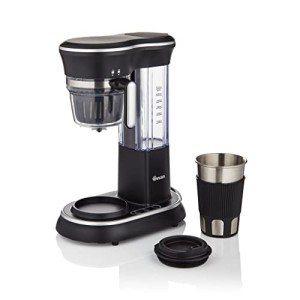The Ultimate Guide to Whole Bean Coffee Machines
In an age where coffee enthusiasts have actually ended up being significantly critical, the option of a coffee machine has actually ended up being more pivotal than ever. Whole bean coffee machines have become a preferred amongst severe coffee drinkers, permitting them to draw out the freshest tastes from coffee beans. coffeee.uk explores the complexities of whole bean coffee machines, exploring their functions, benefits, and factors to consider for the passionate coffee lover.
What is a Whole Bean Coffee Machine?
A whole bean coffee machine is developed to grind coffee beans simply before brewing, making sure optimum freshness and taste extraction. Unlike traditional coffee makers that rely on pre-ground coffee, these machines incorporate a mill, which permits the user to select the grind size suited to their brewing approach, from espresso to French press.
Advantages of Whole Bean Coffee Machines
- Freshness: The main benefit of using whole beans is that they keep their flavor longer than pre-ground coffee. Grinding just before brewing preserves the aromatic oils that add to the total flavor profile.
- Personalization: Many whole bean machines permit users to change grind settings, water temperature, and developing time to create a customized cup of coffee that satisfies specific choices.
- Quality Control: Whole bean coffee machines empower users to choose high-quality beans from numerous sources, making it simpler to explore unique taste profiles.
- Flexibility: These machines accommodate different developing approaches, enabling users to craft espresso, drip coffee, or specialty brews with ease.
- Convenience: Integrated grinders streamline the coffee-making procedure, reducing the need for extra devices and lessening cleanup.
Secret Features to Consider
When selecting a whole bean coffee machine, a number of features need to be considered:
Grinder Type:
- Burr vs. Blade: Burr grinders offer a more consistent grind, which is vital for consistency in taste, whereas blade mills tend to produce irregular grinds.
- Brew Method Compatibility: Ensure the machine can accommodate the developing technique preferred (e.g., espresso, pour-over, French press).
- Capability: Consider the hopper size for holding coffee beans; bigger capacities imply less regular refilling.
- User Interface: Look for machines with instinctive controls, permitting users of all ability levels to operate them easily.
- Upkeep: Machines that are simple to tidy and maintain will save time and make sure the durability of the device.
- Material Quality: Stainless steel and high-grade plastic deal toughness, while machines with glass components tend to be less durable.
Popular Whole Bean Coffee Machines
| Brand | Model | Mill Type | Capability (Cups) | Features | Cost Range (₤) |
|---|---|---|---|---|---|
| Breville | BES870XL Barista Express | Burr | 8 | Espresso machine, steam wand | 600 - 700 |
| De'Longhi | EC702 | Pump | 10 | Dual boiler system, stainless steel | 300 - 400 |
| Cuisinart | DCC-3200P1 | Blade | 14 | 24-hour programmable, drip coffee | 50 - 100 |
| Rancilio | Silvia | Burr | 2 | Expert feel, steam power | 700 - 800 |
| Hamilton Beach | 49980A | Combined | 2 | Single-serve, versatile developing | 30 - 50 |
How to Make one of the most Out of Your Whole Bean Coffee Machine
To achieve the best results with a whole bean coffee machine, consider the following suggestions:
- Quality Beans: Always choose top quality, fresh beans that suit your taste.
- Grind Size: Adjust the grind size based upon the developing method. Finer grinds are proper for espresso, while coarser grinds work better for French press.
- Developing Temperature: Water temperature level must normally be between 195 ° F and 205 ° F (90 ° C -96 ° C) for optimal extraction.
- Water Quality: Use filtered water for the very best taste and to extend the machine's lifespan.
- Upkeep Schedule: Regularly clean the mill and machine to avoid residue accumulation and make sure constant efficiency.
FAQs about Whole Bean Coffee Machines
1. Is a whole bean coffee machine worth the investment?
Yes, if you value the freshness and flavor of your coffee, purchasing a whole bean coffee machine is useful. It enables for a richer and more aromatic cup of coffee compared to pre-ground options.
2. How do I tidy my whole bean coffee machine?
Most machines feature cleansing instructions. Usually, you'll require to get rid of the mill, clean the hopper, and run a cleaning cycle with water. Usage brushes particularly developed for this function.
3. Can I use pre-ground coffee in a whole bean machine?
Many whole bean coffee machines are particularly created for whole beans; nevertheless, some may enable you to use pre-ground coffee. Consult the manufacturer's standards.
4. What is the very best grind size for espresso?
A fine grind is normally chosen for espresso. Nevertheless, experimentation can help find the ideal grind size that matches your taste preferences.
5. How often should I change the coffee beans?
For optimal freshness, it is encouraged to utilize coffee beans within 2 weeks of opening after they have been roasted. Store them in an airtight container away from light and moisture.
A whole bean coffee machine can elevate the coffee experience, offering freshness, customization, and exceptional taste. With many options offered, prospective purchasers can discover a machine that fits their lifestyle and coffee choices. By considering the previously mentioned functions, tips for optimization, and preserving a constant cleansing routine, users can enjoy every cup of newly brewed, aromatic coffee for many years to come. Whether for individual usage or amusing visitors, purchasing a whole bean coffee machine is an action towards coffee excellence.

